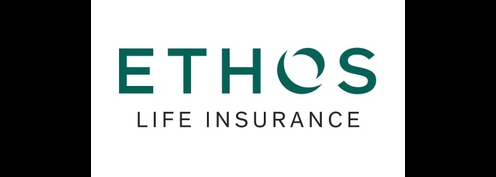- Financially stable company.
- Typically rated highly by J.D. Power.
Best Life Insurance for Seniors in December 2024

Our evaluations and opinions are not influenced by our advertising relationships, but we may earn a commission from our partners’ links. This content is created by TIME Stamped, under TIME’s direction and produced in accordance with TIME’s editorial guidelines and overseen by TIME’s editorial staff. Learn more about it.
The U.S. life insurance market is a crowded one. By one estimate, more than 700 insurers vie for Americans’ life insurance premium dollars. Many of these companies market policies to seniors. We’ve reviewed several leading providers of senior life insurance, looking at the types of policies offered, maximum issue age, and more. If you’re in the market for senior life insurance, check out the following.
Amica offers term and whole life insurance policies, with the latter offering a maximum issue age up to 80. Whole life coverage amounts range from $25,000 to $1 million, and premiums remain level throughout the policy term.
Amica does require medical exams, so it may not be the best choice for those looking for a seamless policy approval. The company is rated A+ by A.M. Best, which is an indicator of its relative financial strength. Although Amica was not included in J.D. Power’s most recent study of the life insurance industry, it may be worth noting that it typically performs near or at the top of J.D. Power’s studies of other insurance markets (such as car insurance).
And because the company offers a full portfolio of personal life insurance policies, including auto and homeowners, Amica may be a great choice for bundling coverage. According to the company, you can earn a discount of up to 30% when you bundle Amica auto, home, umbrella, and life policies.
Note that while you can start an Amica term life insurance quote online, the company offers only a toll-free phone number for a whole life quote. Amica does not have local agents.
Corebridge Financial is a company in transition. It was created when insurance giant AIG spun off its life insurance business in 2022. As of this writing, parts of the Corebridge website still feature the “AIG Direct” brand, and we do notice some inconsistencies between the two experiences.
Nevertheless, the company offers a portfolio of life insurance policies, including term, whole, and guaranteed issue whole life. The latter is available to applicants up to age 80, with minimum coverage amounts of $5,000 and level premiums. Corebridge also includes living benefits such as a chronic illness rider and a terminal illness rider that enable you to access some of the policy’s benefits while you’re living. You can get a quote for any of these life insurance products online or by phone. The company does not appear to have local agents.
Likely owing to the company’s transitional status, Corebridge Financial was not included in J.D. Power’s most recent study of the life insurance market. It also does not appear to have an NAIC complaint index. However, the company has an A rating from A.M. Best.
Ethos Life is actually an online broker that offers several types of life insurance policies from multiple carriers. All of Ethos’ carriers have A.M. Best ratings of A or better, so applicants can be confident they’ll be insured by a financially stable company.
The company offers guaranteed issue whole life insurance for seniors aged 66 to 85, and coverage ranging from $1,000 to $30,000. The entire purchase is online, and the company offers “instant approval.” Ethos claims to have 100,000 agents. However, the company’s website lacks an agent finder, and a regular web search of several major cities turned up only a few Ethos agents.
Ethos also offers free online wills and estate-planning tools, increasing the overall value of the policy purchase.
Everyday Life is another online insurance broker offering life insurance plans from multiple companies. These companies have A.M. Best ratings ranging from A- to A+, indicating their financial stability.
Those wanting to review several policy choices may want to check Everyday Life. For example, its carrier, Fidelity Life, offers a guaranteed issue whole life policy with coverage levels starting at just $5,000. The company accepts applications from individuals up to age 85, which is among the highest in our review. Premiums are guaranteed to remain level for the life of the policy. Its carrier TruStage, meanwhile, offers a no-medical-exam term life policy with coverage up to $300,000 for those up to age 69.
Individuals can apply online or over the phone and get a personalized coverage recommendation based on their needs. The company states that most individuals can get approved immediately.
Gerber Life offers guaranteed issue whole life policies for those aged 50 to 80, with coverage amounts ranging from $5,000 to $25,000. No medical exam is required. The company also offers term and standard whole life policies with higher available coverage levels. These policies may require a medical exam depending on the age of the applicant and the amount of coverage sought.
You can apply for coverage online or over the phone. The guaranteed issue whole life policy offers an 8% discount for those choosing to pay their policy premium by automatic withdrawal from a checking or savings account.
Gerber has an A+ rating from A.M. Best. Its 0.44 complaint index from the National Association of Insurance Commissioners means the company generates far fewer complaints than other insurers.
Ladder Life offers term life insurance policies with limits ranging from $100,000 to $1 million. The company does not offer a standard whole life or guaranteed issue whole life policy, but does accept applicants up to age 60. There is no medical exam for policies under $3 million.
Ladder claims to be the only term life insurance provider that allows policyholders to change their coverage amount as their needs change. Say, for example, someone buys a $500,000 policy with a 10-year term. Five years into the policy, they decide they only need $300,000 of coverage. Ladder allows the customer to change the level of coverage (the premium will lower as well).
Ladder has an A+ rating from A.M. Best. Quotes are available via the company’s website. It does not have local agents.
Those looking for senior life insurance coverage from one of the country’s best-known life insurance brands may want to check out Mutual of Omaha. The company has an A+ rating from A.M. Best for financial stability, and ranked fourth in J.D. Power’s most recent study of the U.S. life insurance market.
Mutual of Omaha offers guaranteed issue whole life for those up to age 85 with no medical exam. Coverage amounts range from just $2,000 to $25,000, and premiums remain level throughout the policy. The company offers online applications with instant approval, as well as a toll-free phone number.
The company’s term life policy is available for those up to age 80, with benefit amounts starting at $100,000 and terms ranging from 10 to 30 years. Term life can be converted to a cash value policy upon the end of its term.
Mutual of Omaha has local agents and an online agent search tool.
| Title | Maximum issue age | Am rating | J.D. Power | NAIC Complaint Index |
|---|---|---|---|---|
Amica | 80 | N/A | 0.39 (72222) | |
Corebridge Financial | 80 | N/A | N/A | |
Ethos | 85 | N/A | N/A | |
Everyday | 85 | N/A | N/A | |
Gerber Life | 80 | N/A | 0.44 (70939) | |
Ladder | 60 | N/A | 0.0 (62154) | |
Mutual of Omaha | 85 | 805 (4th) | 0.62 (71412) |
We gathered information from a number of life insurance companies, relying primarily on their websites. Third-party ratings and rankings information came from A.M. Best, the National Association of Insurance Commissioners (NAIC), and the J.D Power 2023 U.S. Individual Life Insurance Study.
To develop our “best for” ratings, we evaluated each company, focusing on standout features and/or high ratings.
It’s important to note that life insurance can be a complex product. Most of the carriers featured in our review offer multiple types of policies and numerous options. The best policy and company for you will depend on your needs. Consider working with a life insurance agent or financial planner to make sure you get coverage that is right for you and your family.
While life insurance is often an important part of an individual’s financial portfolio, some alternatives may be worth considering.
An annuity provides a guaranteed income stream in exchange for either a lump sum payment or a series of payments. Some annuities can be used to provide income during retirement or to cover specific expenses, such as long-term care costs or funeral expenses.
Individuals who are thinking about life insurance as a way to save their family the burden of paying for a funeral can consider pre-paying. Many funeral providers offer this service.
Those with significant savings and investments can consider setting aside funds to pay for end-of-life costs.
Common policy types include term life, whole life, and universal life. A term life policy remains in force for only a set number of years. Whole and universal life policies remain in force until the policyholder’s death and include a cash value feature. Whole and universal life policies are typically much more expensive than term life.
Coverage amount refers to the amount of money paid out as a death benefit. Most insurers offer a wide range of options, from just a few thousand to several million dollars.
Those with health issues may want to opt for a policy without a medical exam. Note, however, that these policies tend to cost more. So, healthy individuals should strongly consider a policy with an exam requirement.
Keeping the policy in force means staying current with the annual premium payment. Individuals looking for life insurance should choose a policy they can afford.
Common riders include accelerated death benefits for chronic conditions, and long-term care coverage. Applicants should check to see what’s offered.
It’s common for life insurance policies to pay out only a minimal death benefit (usually the value of the premiums paid) if the policyholder dies within one or two years of the policy’s inception. Make sure to read the policy contract carefully to understand these and any other limitations.
A company’s reputation for financial stability and customer satisfaction are important. Applicants should check sources such as A.M. Best and J.D. Power to understand how the companies they’re considering stack up.
As they do with any other type of policy, insurers consider a wide range of factors when calculating the cost of an individual life insurance policy. Some of these include:
Term life policies tend to cost less than whole life (or other cash value) policies.
A policy with more coverage will cost more than one with less.
With all other factors equal, a younger and healthier person will likely pay less for life insurance. And women tend to pay less than men.
Adding optional riders and other features to a life insurance policy will drive up its cost.
Each insurance company factors in its own experience with its customers’ claims, company financial situation, and competitive landscape when determining policy premiums.
It’s tempting to think of life insurance as something for younger people. But the fact is that many seniors may benefit from having a policy. Seniors may buy life insurance because they still have a mortgage or dependents. Or they may buy a “final expense” policy to ensure their family isn’t burdened by medical, funeral, and other end-of-life costs.
Guaranteed acceptance/no medical exam policies are often marketed aggressively toward the senior market. But seniors may find that they do have other options, including standard whole life and term life policies.
Ultimately, the type of insurance a senior pursues will depend on their (and their family’s) financial needs.
Life insurance policies typically have a maximum age at which an applicant can still be approved for coverage. Policies that are more aggressively marketed toward seniors, such as guaranteed acceptance whole life, may have age limits of 80 or above. But standard term and whole life policies typically have lower age limits.
Standard term and whole life policies typically require a medical exam. It’s fairly straightforward. The applicant can expect to be weighed and have blood drawn, and answer some questions about their smoking status, health history, and current condition. The insurer will then use this information during its process of underwriting to determine what the policy should cost.
A no-medical-exam policy skips this step. Some no-medical-exam policies feature accelerated underwriting. With this, the applicant forgoes the exam, but still may have to answer some health questions. The insurer may also access health records from third-party databases.
Other no-medical-exam policies skip this step altogether, guaranteeing acceptance regardless of the applicant’s health history or current condition.The catch? Because the insurer doesn’t have valuable health information, they will likely charge more for the policy. So, while no-medical-exam policies are a common choice for senior life insurance shoppers, those in good health ought to consider policies that do require an exam.
While you might think of life insurance as something purchased by a younger person, many companies market coverage to seniors. Policies can be used to provide financial security, pay off debts, or provide for end-of-life and funeral expenses.
Medicare provides important health insurance benefits for those over age 65. However, the program does not offer life insurance.
The decision to buy life insurance is highly individual, so the answer to the question is beyond the scope of this article. Those thinking of buying life insurance at age 70 may consider many factors, including their financial obligations and financial situation (savings, investments, etc.), family and dependents’ needs, health status, and financial goals. A financial planner or life insurance agent can help an insurance shopper sort through these.
Getting life insurance as a senior can be a little more challenging than for someone younger. This is largely due to factors such as age and health. However, many companies do have life insurance products marketed to seniors, so getting coverage is definitely possible.
The information presented here is created by TIME Stamped and overseen by TIME editorial staff. To learn more, see our About Us page.










